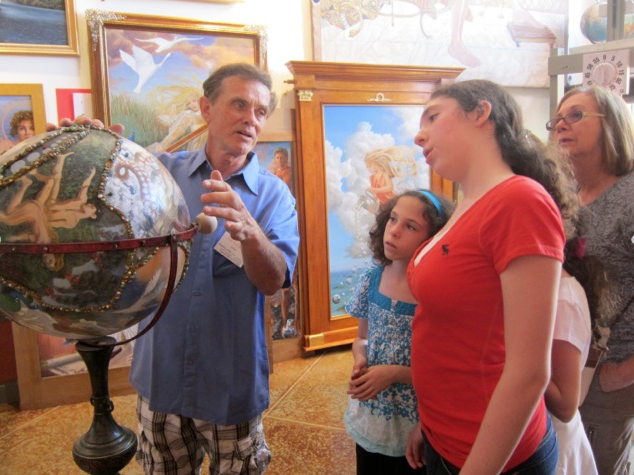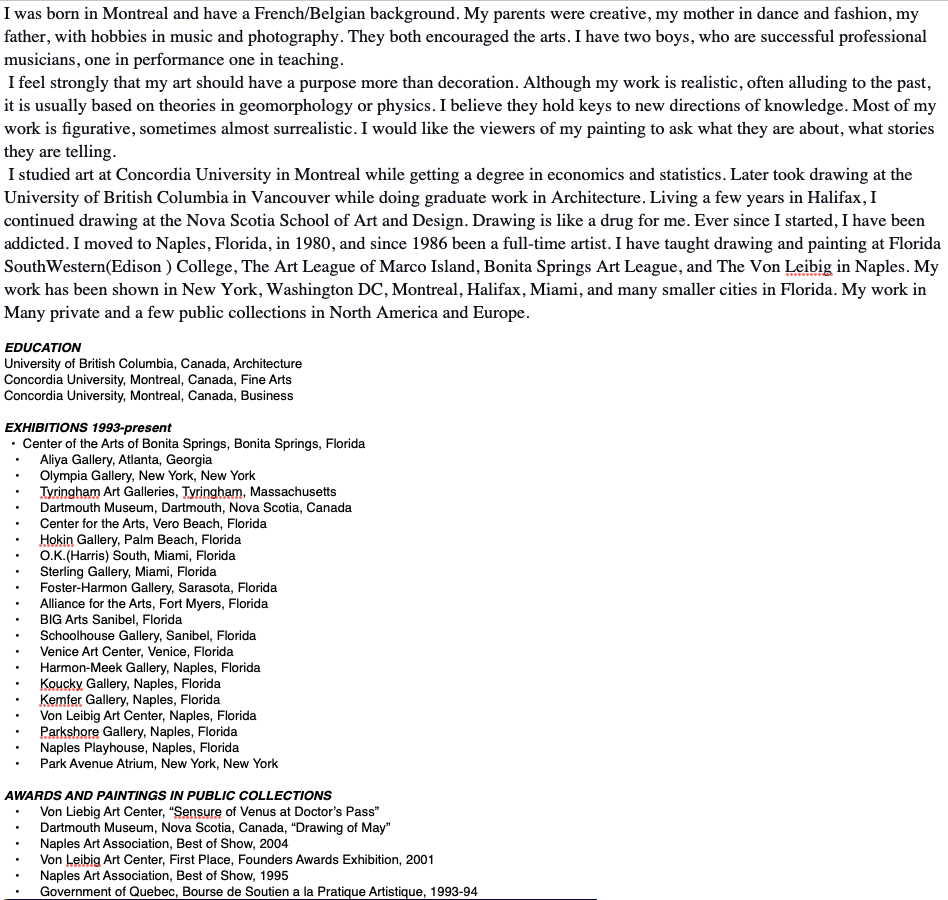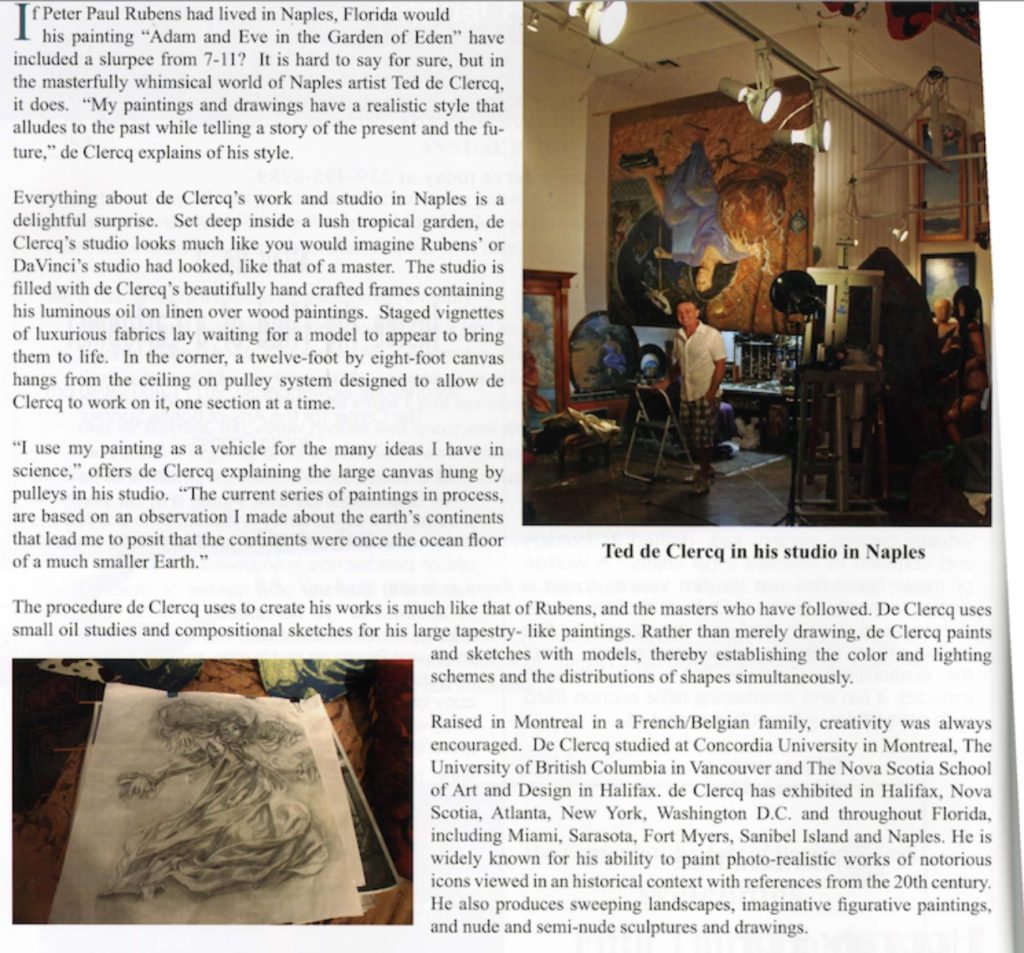My passion since childhood has been art and science. A drawing of an antique car from grade 3 still hangs on my wall(1). The oil painting that was a struggle at 13 still haunts me from a shelf in my studio (2.) I am now an artist, and the inspiration for many paintings comes from scientific theories, ideas, and discoveries that I have formulated.
Science is an interest ignited by my mother. She told me the story of an earthquake she experienced (1925 Charlevoix–Kamouraska earthquake, February 28, 1925, at 9:19:20 pm). While she and her sisters were doing their homework at the dining table, a tremor threatened to topple the china cabinet. So together, the sisters pushed the cabinet against the wall and saved their mother’s dishes and crystal. It was an experience I feared and envied.
The earthquakes around Montreal and the St. Laurence River result from movement along the many fault lines and the complex volcanic past that date back billions of years. In addition, Mount Royal itself is volcanic.
The idea that the ancient volcano might awake from its eons of sleep was always in my thoughts when I took trips over the mountain. The route, Boulevard Côte des Neiges, cut through the ridge exposing Montreal grey stone veined with white. These magma intrusions into the solid rock were evidence of the tremendous forces that might be aroused(3.)
Learning that repeated ice ages had worn down the mountain by thousands of feet added to my fascination with the geological history around Montreal.
But as I studied geology, I became dissatisfied with some of geological science’s explanations and theories of Earth’s history.
Science offered theories and conjectures that did not always explain Earth’s past clearly and logically. For example, science believes that a slow folding of sedimentary rock created vast metamorphic rock in mountain ranges worldwide. Very high temperatures are required to make metamorphic rock. However, a slow buckling of sedimentary stone would allow the heat produced by a slow folding of sedimentary stone to dissipate before transforming into metamorphic rock.
On the other hand, rapid folding would have created vast quantities of heat, quickly producing vast amounts of metamorphic rock. The same accelerated event could have caused the thousands of square miles of pillow lava found on the ocean floor. The incident may have caused dramatic and rapid climate changes and magnet pole reversals. (Titian’s π.) I received positive replies from geologists in Europe and Australia, who also recommended publishing the theories.
A U.S. Ph.D. climatologist concurred with my data on climate change. The figures indicate that we are in a climate cycle of approximately 100,000 years. (Details of this cycle are explained with the painting “The Bering Strait Dike Fund.”)
A CIRCUITOUS ROUTE
The change to becoming an artist began when I decided against getting an MBA and started a graduate course in architecture. Although I never became an architect, the classes opened me to art, and the assignments often ended up as performance art. For example, I used a weekly Friday, Happy Hour, in the lobby of the architectural building for a project to effect points of transition. I filled the hall three feet deep with crumpled newspaper. The students, sudo-sophisticates, and professors, perhaps 100 people, were knee-deep in a sea of paper. The result was that they were less self-conscious, less pretentious, somewhat distracted, and talking more joyfully as they casually balanced their wine glasses.
On another occasion, I built a maquette of a sculpture for the front of a downtown mall. It was to be seating and a stage. To show how it would workI hired a magician and brought in an audience of 15 children and their parents. Their participation made the project a great success.
After architectural school, I started a salvage business, saving pieces of buildings about to be demolished. Architectural Antiques was a success, and selling it, seven years later gave me the financial freedom to devote myself to art and writing.
The salvage business required me to have skills with wood, stone, and marble and conserve stained glass windows. I still use my skills in painting and making frames. Surprisingly, learning about stained glass taught me skills I still use in oil painting.
But it took me years before I perfected my techniques by using old master paintings and composition as models for my paintings but with contemporary settings ( examples), I began using science as themes for my art. (examples)
NAPLES AND ART FULL TIME
Ted painted, drew, and worked on concepts about the Earth and the stars. The discoveries caused an avalanche of ideas that became the themes of his paintings.
He tried many methods of applying paint to canvas. Unfortunately, mediums from the old masters, recipes from antique art books, and mixtures from contemporary artists did not give the results he sought. Finally, Ted discovered the method of painting that gave him the desired results and had the benefit of making painting straightforward. He started to understand how painters like Titian, Rubens, and Rembrandt applied paint with supernatural brushwork and an enchantment of depth that has been lost by modern painters. Even photorealists who mimic a photograph’s image can’t instill the drama, movement, and vitality of the great masters’ brush.
Ted used the old master’s images to set up models for reference and reproduce antique paintings with contemporary or fanciful settings. Paintings like Leda and the Anhinga(6)or Adam and Eve at 7 11 (7)were compositions taken from paintings by Boucher and Michelangelo.
Then he started to paint ideas into his work. Lucia’s and Penelope’s gifts to God (8)and The Rain Catchers(9) were critiques of current views on pollution and acid rain(10.) Ozone Holiday was also skeptical of science’s stance on problems with the atmosphere. The Expanding Earth Theory(11) was the first painting that resulted from my discovery and subsequent theory. It provides an elegant and comprehensive explanation of the Earth’s geological history. Moreover, verifying this thesis by observing how perfectly the continents fit together on a miniaturized globe is a simple process.
https://youtu.be/R52mT1ukvd0

